|
Small Ruminant Research Summaries AASRP Meeting at 51st AABP Annual Conference Phoenix, Arizona, USA, September 14, 2018 The 51st AABP Annual Conference will feature a scientific session focused on small ruminant research applicable to the health, welfare and productivity of goats, sheep, camelids or farmed deer. Research projects having direct application to small ruminant practitioners are being sought for the Oral Session on Friday, September 14. Each presentation should be limited to 15 minutes. Faculty, graduate students, practitioners or veterinary students are urged to share information with practitioners.
0 Comments
Dear researchers, colleagues, and stakeholders in animal production- veterinary medicine, agriculture, environment, and economic.
The first Asia-Australasian Dairy Goat Conference was held on April 9th-12th, 2012 in Kuala Lumpur, Malaysia by FAO joined with the University Putra Malaysia (UPM), Department of Veterinary Science, Malaysia and the International Dairy Federation (IDF). That provided a platform to share technical information and experiences and to network for the promotion of dairy goat farming. Following the success of the Third one, the Fourth AADGC will be held at Tra Vinh University, Vietnam on October 17th-19th, 2018. The theme of this conference is Strengthening Development of Dairy Goat Production Adapting to Climate Change. Goats were among the first farm animals to be domesticated. Goats disseminated all over the world because of their great adaptability to varying environmental conditions and the different nutritional regimes under which they were evolved and subsequently maintained. The global goat population currently stands at 921 million, of which over 90% are found in developing countries. Asia is home to about 60% of the total world goat population and has the largest goat breed share of 26%. India is the second largest producer of the goats. Central Institute for Research on Goats (CIRG) in India is Asia’s only institute dedicated to Goat Research. Asia contributes approximately 59% to world goat milk production and India is the largest producer of the goat milk. Rajasthan state of India has the second highest population of goats after Andhra Pradesh and has two renowned research institutes of Indian Council of Agricultural Research (Central Sheep & Wool Research Institute, Central Arid Zone Research Institute) are executing R & D beside promoting goat-based animal husbandry in the country.
Written by Livio Costa-Júnior, IGA Country Representative for Brazil and Professor of Parasitology at the Federal University of Maranhão
The Northeast Region of Brazil has 90% of the 10 million goats present in the country (Figure 1). The Northeast is characterized by an area of 981,821 km² of a semi-arid interior and 3,317 km of coastline, where it has the highest human population density and a large consumer market for products from this semi-arid region. Consumption occurs in specialized restaurants and bars in all areas of the Northeast region with several typical dishes. 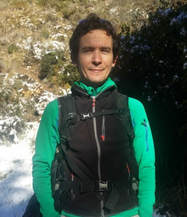 La Asociación Internacional de Cabras se enorgullese en anunciar que Francisco de Asis Ruiz es nuestro nuevo Director Regional para Europa del Oeste. Abajo se encuentra una entrevista de OVIESPAÑA con Francisco. Nuestro agradecimiento especial para OVIESPAÑA por permitirnos usar esta información. Para leer una versión traducida al Inglés, presione aquí. Francisco de Asís Ruiz es uno de los investigadores más reputados del sector caprino en España. Trabaja como técnico del Área de Economía de la Cadena Agroalimentaria del Instituto Andaluz de Investigación y Formación Agraria (Ifapa) de Granada y recientemente ha sido nombrado director regional de la Asociación Internacional del Caprino (IGA) para Europa Occidental. En esta entrevista, Ruiz analiza el papel que desempeña la IGA, la estructura del sector caprino europeo y su futuro. OVIESPAÑA. Acaba de ser elegido recientemente como representante de la International Goat Association (IGA) en Europa. ¿Cómo está organizada esta asociación en Europa? FRANCISCO DE ASÍS RUIZ. Cada país cuenta con un número de miembros que vota cada cuatro años a la Junta Directiva (IGA board), y esta cada año evalúa las propuestas y elige los representantes de cada nación. En el caso de España, en 2014 se hizo una propuesta desde el sector caprino español en el V Foro Nacional de caprino celebrado en Sevilla y decidieron proponerme como representante en España. Entre los representantes nacionales, la comisión correspondiente del IGA Board en función de su actividad en los cuatro años anteriores elige un Director en cada continente, y en este caso he sido elegido recientemente como Director de Europa Occidental. READ MORE... IGA is proud to announce that Francisco de Asís Ruiz is our new Regional Director for Western Europe. Below is a translation of an interview by OVIESPAÑA with Francisco. Special thanks to OVIESPAÑA for allowing us to use this information. To read the original Spanish version, click here.
Francisco de Asís Ruiz is one of the most reputable researchers in the goat sector in Spain. He works as a technician in the Economics Department of the Agrifood Chain of the Andalusian Institute for Agricultural Research and Training (Ifapa) in Granada and has recently been appointed Regional Director of the International Goat Association (IGA) for Western Europe. In this interview, Ruiz analyzes the role played by the IGA, the structure of the European goat sector and its future. Which meat goat breed is best?
Canada is home to Boer, Kiko, Spanish, and Myotonic meat goats. Each meat goat producer will be able to tell you why they raise a specific breed, a combination of breeds, or cross breed of two or more breeds on their farm. However, what works well on one operation may not be ideal for all situations. While insight from experienced meat goat producers is invaluable, recent science has been investigating the profitability of different breeds of meat goats. 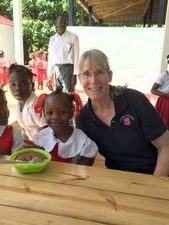 Written by Chelsea Kellner For more than a decade, Professor Charlotte Farin and the NC State Haiti Goat Project have joined the country’s struggle against rampant childhood malnutrition: the project provides high-protein lunch supplements to rural schools while working to improve the genetic stock of local goat herds. Now they plan to expand, doubling the number of protein-rich meals provided to schools each month. It’s a success story uniting agricultural know-how and academic data with the passion of local residents to help improve living conditions in the poorest country in the western hemisphere. “We have a responsibility to help other people. That’s what this grew from,” Farin said. “Agriculture built the United States, and it’s a beautiful vehicle for helping build other societies as well.” Presented by North Carolina State University August 6-8, 2018 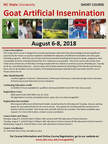 Course Description: This 3-day short course is designed to provide participants with both theoretical background and significant opportunity for hands-on practice needed to facilitate the adoption of artificial insemination into their goat breeding programs. With the use of improved transcervical AI breeding techniques for goats, pregnancy rates comparable to those routinely achieved for AI in cattle are now possible. This short course will consist of an initial series of lectures on Monday morning coupled with four hands-on practice sessions (Monday pm, Tuesday am & pm, and Wednesday am). Lecture topics will include anatomy & physiology of the female reproductive tract, estrous & ovulation synchronization, AI breeding techniques (standard and improved), and the use of frozen semen for AI. Who Would Benefit: Livestock agents, Producers, Veterinarians, Veterinary Technicians, International Agriculture Workers, Animal Science and Veterinary Science Students Continuing Education Credit: 15 AVMA CE hours available for qualified individuals (AVMA Event ID# To Be Announced) Registration Costs: $600 (early bird); $650 after July 10, 2018 All registrations must be completed online: www.cals.ncsu.edu/ncsugoatAI/ Registration Fees Include: Morning and afternoon refreshment breaks, boxed lunches for Monday and Tuesday, manual, parking passes for personal vehicles for all course venues. All supplies for working with the animals and AI practice will be provided. Barn boots and coveralls will also be provided. Visa letters available upon request. For more information, contact course coordinator. Course Dates and Times: Monday, August 6, 2018 (8:30am-5:00pm; AM Lectures with PM Laboratory Practice Session) Tuesday, August 7, 2018 (8:30am-5:00pm); AM Laboratory Practice Session & PM Laboratory Practice Session) Wednesday, August 8, 2018 (8:30am-noon; AM Laboratory Practice Session) Course Coordinator: Dr. Charlotte Farin ([email protected]) For Course Information and Online Course Registration, go to our website at: www.cals.ncsu.edu/ncsugoatAI/ |
IGA Blog
The International Goat Association promotes goat research and development for the benefit of humankind, to alleviate poverty, to promote prosperity and to improve the quality of life. Archives
May 2024
Categories
All
|
|
International Goat Association
2516 Millbrook Rd., Little Rock, AR72227 USA email: [email protected] -454-1641 |
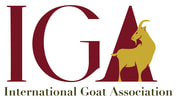


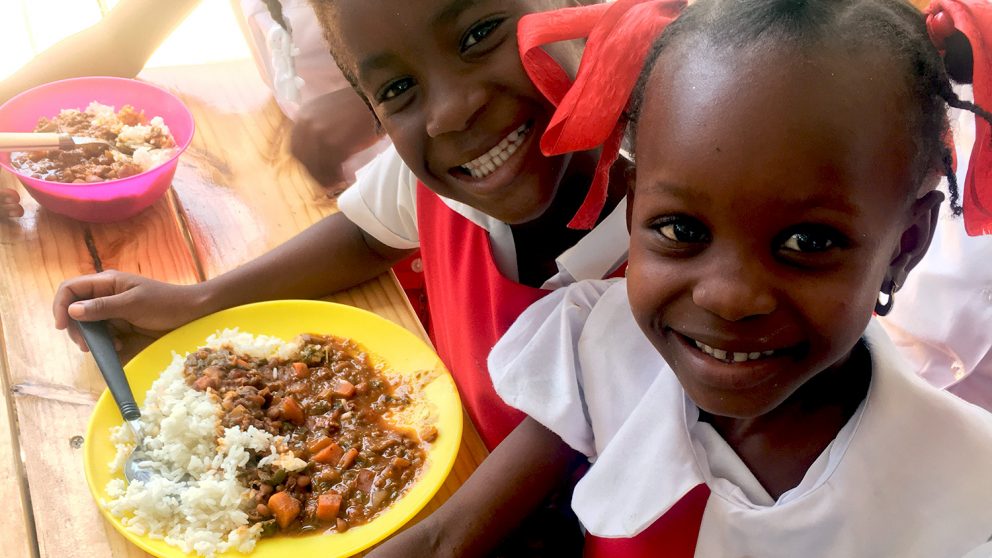
 RSS Feed
RSS Feed